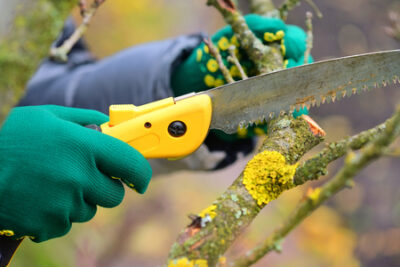
One of the most crucial tasks during the spring period is the pruning of trees and shrubs. Pruning not only helps maintain the shape and health of your plants but also encourages vigorous growth and flowering. Here at Cold Stream Farm, we understand the importance of proper pruning techniques and would like to share some essential tips to help you ensure that your trees and shrubs remain vibrant and healthy throughout the year.
Why Prune in Spring?
Spring provides a unique window for pruning many types of trees and shrubs. After the winter dormancy period but before the full flush of spring growth, pruning can help to stimulate new growth, enhance flowering, and prevent diseases and pests from becoming a serious problem. The timing is particularly beneficial because fresh wounds heal quickly in spring, reducing the risk of infection.
Tools You’ll Need
Before you begin pruning, it’s essential to have the right tools. These should include:
- Pruning shears: Ideal for small branches and ideal for most shrubs.
- Loppers: Better for branches that are a bit thicker, generally up to 1.5 inches in diameter.
- Pruning saw: Necessary for even thicker branches.
- Hedge shears: Best for shaping hedges rather than individual plants.
Ensure that all tools are sharp and clean. This makes cleaner cuts that heal faster and reduces the risk of spreading disease.
General Pruning Tips
- Start by Removing Dead or Diseased Wood: Cut back any dead branches or foliage that have been damaged over the winter to prevent decay organisms from entering the plant.
- Thin Out Crowded Areas: This increases air circulation, which reduces the risk of disease and allows light to penetrate deeper into the plant, encouraging healthy growth.
- Shape for Future Growth: While pruning, consider the natural shape of the plant. Avoid over-pruning as it can stress the plant and lead to poor growth or even death.
- Make Clean Cuts: Always cut just above a bud that faces the outside of the plant. This directs new growth outward and ensures your plant doesn’t grow too dense.
Specific Tips for Trees
- Prune for Safety: Remove any branches that pose a hazard to property or people.
- Encourage a Strong Structure: For young trees, shape them early to promote a strong, sustainable structure.
- Consider Tree Species: Some trees such as maples and birches bleed sap if pruned in late winter or early spring. For these, it may be better to prune in mid-summer after the leaves are fully developed.
Specific Tips for Shrubs
- Rejuvenation Pruning: Older shrubs may benefit from rejuvenation pruning, which involves cutting back the plant to a height of 6-12 inches. This encourages new growth and a more compact shape.
- Timing for Flowering Shrubs: If the shrub blooms in the spring, prune it immediately after the flowers fade. For summer-blooming shrubs, prune them in late winter or early spring before new growth begins.
Spring pruning is an art that balances aesthetics with the biological needs of the plant. By following these guidelines, you can help ensure your trees and shrubs are healthy, beautiful, and well-prepared for the season ahead. Remember, each cut can significantly affect a plant’s growth, so always prune with care and consideration.
For specific advice tailored to the unique needs of your landscape, feel free to contact us at Cold Stream Farm. Our experts are ready to help you with all your planting and landscape maintenance needs, ensuring your garden remains a thriving and inviting space all year round.

